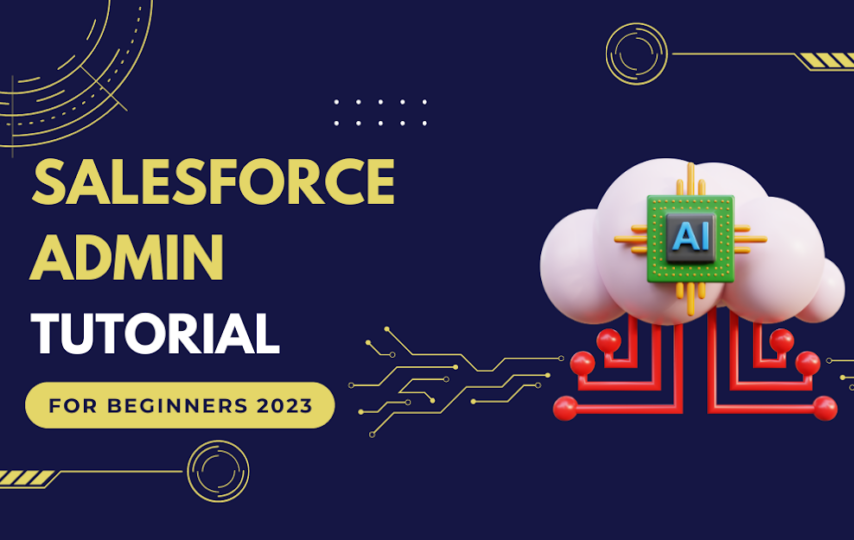In the ever-changing world of business today, technology holds a central position in boosting effectiveness and output. At the forefront of Customer Relationship Management (CRM) platforms, Salesforce enables businesses to smoothly oversee their sales, customer service, and marketing operations. If you’re new to this, delving into the complexities of Salesforce administration could appear overwhelming. However, there’s no need to worry! This is where the ‘Salesforce Admin Tutorial for Beginners 2023‘ comes in. This guide is designed to help you grasp the fundamentals of Salesforce administration, equipping you with the essential knowledge to initiate your journey with confidence.
Introduction to Salesforce Administration
At its core, Salesforce administration involves the configuration, customization, and management of Salesforce orgs (short for organizations). Salesforce orgs act as containers for data, applications, and settings, tailored to meet an organization’s specific needs. As a Salesforce admin, your role is to ensure that the platform aligns with your company’s goals and workflows.
What is Salesforce?
Salesforce is a cloud-based CRM platform that offers a suite of tools designed to help businesses manage their customer relationships effectively. It provides features like lead management, opportunity tracking, case management, and marketing automation. Salesforce is highly customizable and can be tailored to suit various industries and business models.
The Role of a Salesforce Admin
A Salesforce admin is responsible for configuring and maintaining the Salesforce org, managing user access, creating and modifying fields, setting up automation processes, and generating reports and dashboards. Their goal is to optimize the platform to support the organization’s unique processes and requirements.
Setting Up Your Salesforce Org
Before diving into the complexities of Salesforce administration, you need to set up your Salesforce org. Follow these steps to get started:
- Sign Up for Salesforce: Visit the Salesforce website and sign up for a free trial or a developer edition org to practice without affecting live data.
- Navigate the Setup Menu: The Setup menu is your control center. It’s represented by a gear icon and provides access to all administrative functions. Familiarize yourself with the menu’s options.
- Customize Your Home Tab: The Home tab is the first thing users see upon logging in. Customize it with relevant components like reports, dashboards, and quick links to frequently used records.
- Set Up Users: Add users to your org and assign profiles and roles. Profiles define what users can see and do in the org, while roles determine data access levels.
Data Management and Customization
One of the key aspects of Salesforce administration is managing and customizing data to suit your organization’s needs. Here’s how you can do it effectively:
Data Management
- Objects: Objects are database tables that store different types of data, such as leads, contacts, and opportunities. Customize existing objects or create new ones to capture unique information.
- Fields: Fields are the individual data points within an object. Tailor fields to collect specific data and ensure consistency.
- Records: Records are instances of objects. Learn how to create, edit, and delete records while adhering to data quality best practices.
Customization
- Page Layouts: Page layouts define the arrangement of fields, sections, and related lists on record detail pages. Customize layouts to display relevant information prominently.
- Validation Rules: Validation rules prevent users from entering incorrect or incomplete data. Create rules that trigger error messages if data doesn’t meet specified criteria.
- Workflow Rules: Workflow rules automate standard internal procedures. Define rule criteria and specify actions to be taken when criteria are met.
- Process Builder: This tool lets you create more complex, multi-step processes with point-and-click efficiency. It’s useful for automating processes involving multiple objects.
Automation and Collaboration
Salesforce offers robust automation capabilities to streamline processes and enhance collaboration among teams. Here’s how you can leverage these features:
Automation
- Workflows: Automate repetitive tasks by creating workflow rules. For example, automatically assign leads to sales reps based on specific criteria.
- Process Builder: Build automated processes that involve multiple steps, updates to related records, and approval processes.
- Flow: Use Flow to automate complex business processes by creating applications that guide users through screens and collect data.
Collaboration
- Chatter: Chatter is Salesforce’s collaboration tool. It allows users to post updates, ask questions, and share files in real-time, promoting teamwork and knowledge sharing.
- Sharing Settings: Define how data is shared across the organization. Specify sharing rules, roles, and public groups to control data visibility.
Conclusion
Embarking on your journey as a Salesforce admin may seem overwhelming, but with the right guidance and practice, you can master the art of configuring and managing Salesforce orgs. Remember that Salesforce is a dynamic platform, and continuous learning is essential to stay updated with the latest features and best practices. By following this tutorial and diving into the resources provided by Salesforce, you’ll be well-equipped to contribute to your organization’s success through effective CRM administration.








